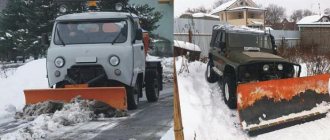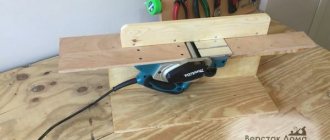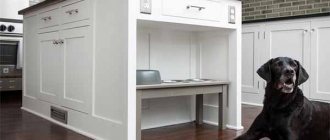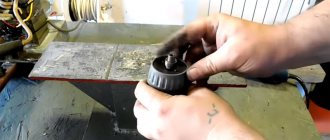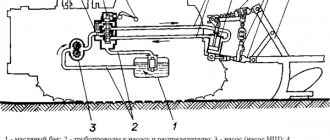Oka base, transmission – Niva
In this “passenger tractor” it is quite difficult to recognize Oka, which the owner managed to install on truly gigantic low-pressure tires on homemade rims, assembled from tubes that had become completely unusable and protected from mechanical damage by a dense fabric layer from a fire hose.
Moreover, the master went even further, providing all-wheel drive in his super SUV, using the transmission from the old Niva for these purposes. It is noteworthy that the entire chassis was also borrowed from the Niva, which makes it possible to overcome almost any off-road terrain.
In addition, a winch was provided on board this hybrid in case of various force majeure. As for the shortcomings, the durability of such tires and chassis does not inspire much confidence, although it is quite possible that these fears are completely unfounded.
"Lenekhod"
Just by the name of this transport, it becomes clear that its author and designer was a master named Leonid. Indeed, a resident of the city of Nyagan, who built such a miracle of technology, capable of accelerating up to 50 km/h and overcoming any water barriers, bears this very name.
If we talk about the technical characteristics of the snowmobile, then it was built on the body of the same Oka, placed on an all-welded profile frame, receiving a motor from a VAZ-1111 as a power plant.
But for his Lenekhod, Lenya took the steering wheel and all the elements leading to it from an old nine, while he liked the universal base of the Niva as a chassis.
The result is a real hodgepodge of meat, and even on studded SHAIN tires, but the car copes with its duties with a bang, helping the owner transport firewood and other cargo.
4x4 all-terrain vehicle with engine from OKA
The work of DIYers is exciting and interesting. But it does not always lead to unexpected results. A striking example of such a turn of the situation is this all-wheel drive all-terrain vehicle. It is curious in that work on the vehicle was initially carried out with the goal of creating a karakat. The result is a completely comfortable 4x4 vehicle that moves well off-road and even floats well with a trailer.
A snow and swamp-going vehicle that can even swim
Even more solid results were achieved by a car mechanic from Rubtsovsk, who used not only the body, but also the Oka engine when creating his unique creation.
To ensure record cross-country ability, allowing the all-terrain vehicle to overcome any off-road conditions, snow drifts and rivers, the designer tried to make this model as light as possible, actually removing rear axles from its design.
In addition, the master made the wheels himself, using the tubes from an old trailer as a basis. In any case, the machine turned out to be quite solid in appearance, having served its owner faithfully for three years in a row.
Moreover, she has attracted the interest of other residents of the Far North, who call the talented master, offering to buy his masterpiece for a considerable sum.
Stages of creating a homemade karakat
If you want to construct a Vologda swamp vehicle, the Karakat, or its other models at home, you should first of all purchase the necessary tools in advance, as well as acquire suitable components.
The complete list of necessary components and tools may vary and directly depends on the selected vehicle model that is planned to be manufactured. When analyzing the assembly process of such a product, it is necessary to highlight several important stages:
- Selection of the frame of homemade tractors or motor vehicles, which will become the basis of the future device.
- Planning and assembly of the rear axle and vehicle suspension.
- Selection and installation of suitable wheels.
- Installation of the power unit.
Since these types of elements seem to be key in the design of a swamp vehicle, it is advisable to consider the features of their selection and installation in more detail.
The main structural element is the frame, on which other components and assemblies will be installed in the future. Its choice directly affects the appearance of the future caracat, as well as its performance characteristics. Experienced craftsmen recommend using the frames of old domestically produced motorcycles, for example, IZH or Ural, since it is much easier to make a karakat from a motorcycle than from a car.
Spare parts from them are characterized by low cost, high strength and optimal characteristics for use as the basis for a swamp vehicle. After all, such three-wheeled models boast high maneuverability and maneuverability, which makes them universal. During the manufacturing process, it is advisable to use a frame drawing due to the complexity of the assembly.
Suspension
When designing the chassis, it is strongly recommended to give preference to an independent type of suspension. This is due not only to the ease of its manufacture, but also to its excellent characteristics.
If the user does not have the ability to implement independent suspension, standard pneumatic wheels can be used.
Wheels
The choice of wheels for a future swamp vehicle must be given special attention, since its maneuverability, as well as ease of operation, depend on this. Large wheels from high-power trucks are perfect for this type of use.
Low-pressure chambers are used throughout, allowing the all-terrain vehicle to overcome even large obstacles. If desired, you can make karakat discs, which will significantly improve the appearance of the structure. It should be remembered that for pneumatic tires it is necessary to use only truck tire tubes, and not the wheels themselves.
Engine
After the installation of the wheels has been completely completed, you should begin installing the engine, as well as the accompanying mechanisms necessary for the correct movement of the vehicle. As mentioned earlier, it makes sense to give preference to powerful units equipped with liquid and air cooling. A good option could be a product with a Lifan engine.
All-wheel drive Oka
To create this unique all-terrain vehicle, donors such as Oka, which habitually donated its body, UAZ, which donated strong axles to the SUV, and Niva with its durable transfer case, were used.
As for the features of the assembly, among them it is worth highlighting the wheels with tires from KrAZ, spaced from the body, mounted on discs with an offset, springs from the Volga cut into two leaves and its steering, which, although it did not give light turns, but cost zero, in contrast to the previously planned expensive hydraulic booster.
There were also weaknesses, which turned out to be CV joints that quickly fail, as a result of which the owner always has to carry a spare tire with him.
All-terrain vehicle assembly instructions
To make a wheeled all-terrain vehicle based on the Oka car, you need:
- calculate the chassis structure and prepare detailed drawings;
- assemble a welded frame from a steel profile on a slipway;
- mount suspension elements and rear axle;
- install the steering mechanism on the chassis;
- calculate and install a rocker that allows you to change gears;
- install the power unit;
- carry out final assembly and test the functionality of the structure;
- eliminate detected faults and modify the all-terrain vehicle.
Blueprints
The drawings contain frame dimensions indicating the distances between the installation points of transmission and suspension parts and allow you to calculate the distance between the body and the chassis. The diagrams provide calculation of the amount of steel profile, the strength of the structure is calculated separately. During further test runs, parts may be destroyed, which will have to be reinforced with additional gussets. The reinforcements are made from sheet steel or profiles and then welded to the frame of the all-terrain vehicle.
Frame
The steel frame for remaking the Oka is assembled from side elements that are connected to each other by cross members. For construction, it is recommended to use a closed square section profile measuring 50x50 mm with a wall thickness of 2.5-3.0 mm. Welded seams are descaled and ground, the surface of the frame is cleaned of rust and covered with a layer of acid primer. Holes are provided for mounting transmission units, power plant, leaf springs and shock absorbers. On average, up to 20 m of pipe is required, the weight of the structure is 50 kg.
Rear axle and suspension
When constructing the suspension, the design of the axles and the weight of the all-terrain vehicle are taken into account. The base of a wheeled off-road vehicle remains unchanged or increases, since the tires do not fit into the standard body arches. It is recommended to use leaf springs from Volga passenger cars or GAZelle light trucks. The frame is provided with support brackets into which the ends of the sheets are inserted. The number of elastic elements is selected experimentally.
Telescopic shock absorbers removed from the Niva are introduced into the chassis. They smooth out vibrations when driving on uneven roads. The posts are attached to the bridge beam and to bolts on the frame cross members. The bridges are installed on springs using homemade clamps, which prevent lateral displacement of the structure when driving off-road.
Steering
To change the direction of movement, steered front wheels are used, which are installed on standard steering knuckles from Niva or UAZ cars. The steering gearbox from Volga is mounted on the frame.
Using a device with a hydraulic booster is difficult, since you will need to install a pump on the engine and mount the supply and discharge lines of the working fluid.
The gearbox is connected to the steering knuckles by levers and rods equipped with articulated joints.
To install tires, modified rims are used that allow the installation of wide tires (for example, from ZIL or Ural military trucks). The outer part of the tire is processed with an abrasive tool, which forms the tread pattern. To reduce weight, a metal cord is cut from the sidewalls of the tire. Due to the increased offset of the wheel rims, the load on the wheel bearings and joints increases; it is recommended to carry a set of spare drives with you.
How to make a curtain
The link is made on the basis of drawings, taking into account the design features of the Oka-based all-terrain vehicle. The shift lever is installed in the cabin, then a rod with a cardan joint is mounted, which is protected by a metal screen from overheating. When manufacturing elements, it is necessary to provide length adjusters that allow you to adjust the rocker taking into account the position of the engine. The power unit and gearbox are installed longitudinally (on the Oka, the motor and gearbox are mounted transversely).
A metal angle attached to the engine is used to install guide bushings in which the shift rod runs. From the rod comes a lever system that is attached to a bushing on the speed selection rod. The vertical rod is also installed in the guide cylinders, providing increased switching accuracy. The softness of changing gear ratios is inferior to the factory mechanism; during operation, damage to the gears and synchronizer rings in the gearbox is possible.
Engine installation
The power unit is installed on the frame cross members using standard rubber pads. Before starting operation, the engine is serviced and fresh engine oil is added.
The radiator is connected by hoses to the cooling jacket and the heat exchanger of the stove, which heats the air in the cabin of the all-terrain vehicle. Torque from the power unit is transmitted through the gearbox to the transfer gearbox, which distributes the power flow between the drive wheels of a homemade all-terrain vehicle.
Snow and swamp-going vehicle on "batteries"
Recently, more and more self-taught craftsmen have been trying to use so-called rubber tires, which more than replace large-radius factory tires that cost a lot of money. As for their processing, this process is not complicated, implying the creation of a new tread on an old tire.
Practice shows that such wheels cope well with off-road conditions, and as an example we can cite the Oka installed on them with a frame and axles from a UAZ, a transfer case from a Niva and an original engine with a gearbox.
Homemade SUVs inspire other car enthusiasts to the most daring feats, especially since their assembly can be limited to old spare parts and cars that have fallen into disrepair. Perhaps that is why every year more and more examples of such works appear on the Internet, which really deserve special attention.
Required spare parts
To make a wheeled or tracked all-terrain vehicle based on the Oka, you need to prepare:
- car body with engine and gearbox;
- steel profile for building the frame;
- drive axles from VAZ or UAZ vehicles;
- shock absorbers and leaf springs;
- cardan shafts and transfer gearbox;
- caterpillar belt and road wheels.
The list of additional parts depends on the design of the future all-terrain vehicle. These can be drive wheels and brake mechanisms for a tracked chassis.

